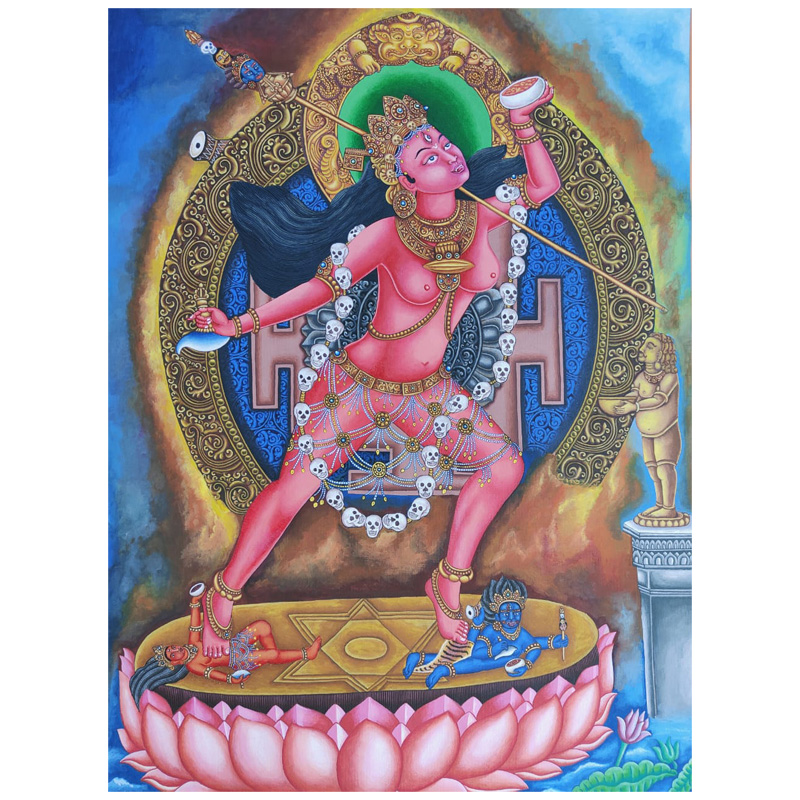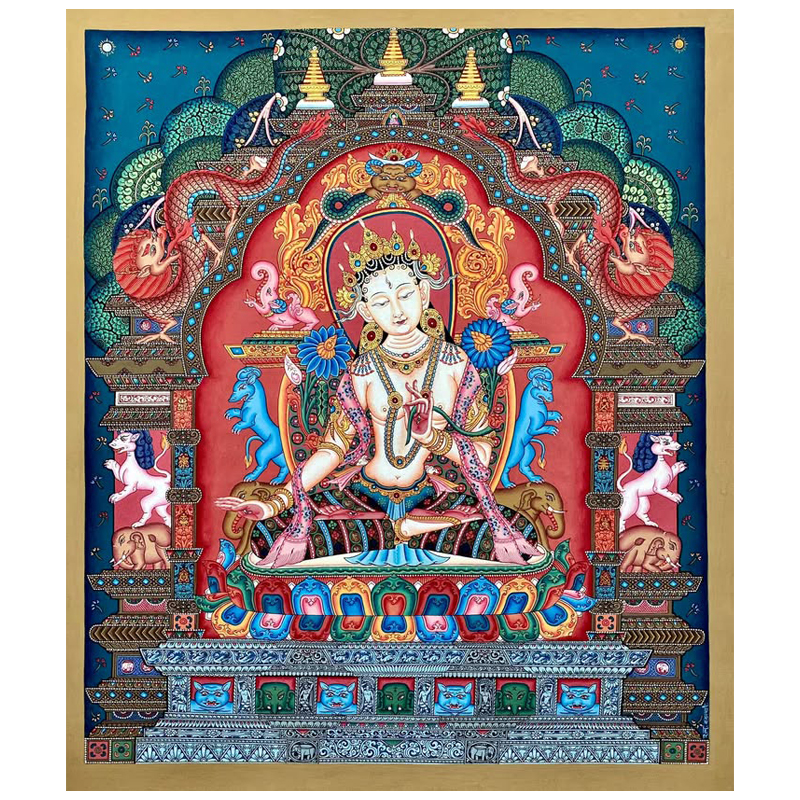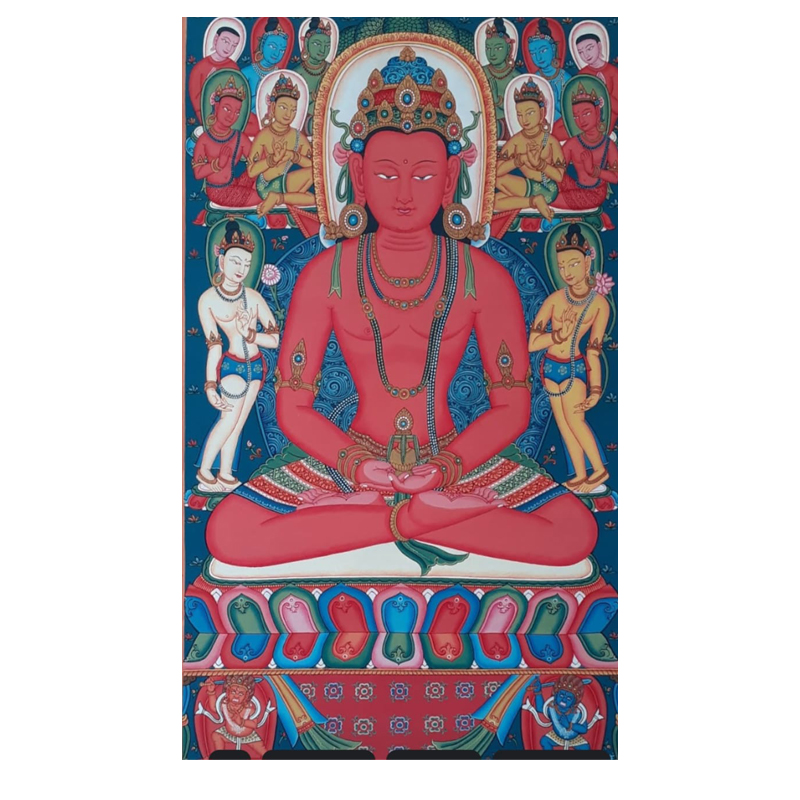

This painting depicts Vajrayogini, a powerful and transformative deity in Tibetan Buddhism, known as the embodiment of ultimate wisdom and compassion. Vajrayogini is a tantric goddess often revered as a dakini, representing the path to enlightenment and the transformation of mundane desires into spiritual bliss. Here's a detailed explanation:
1. Central Figure:
- Posture: Vajrayogini is portrayed in a dynamic dancing posture, symbolizing her active engagement in destroying ignorance and liberating sentient beings. This stance signifies her fearless nature and mastery over dualistic existence.
- Color: Her body is depicted in a vivid red hue, symbolizing life force, passion, and the energy of transformation.
- Expression: Her fierce yet compassionate expression reflects her dual role as a protector and guide.
2. Attributes and Symbols:
- Kapala (Skull Cup): She holds a kapala filled with nectar in one hand, symbolizing the bliss of enlightenment and the transformative power of wisdom.
- Kartika (Curved Knife): In her other hand, she wields a curved knife, signifying her ability to sever attachments and illusions.
- Garland of Skulls: The garland of skulls around her neck represents the impermanence of life and the cycle of death and rebirth (samsara).
- Crown and Ornaments: Vajrayogini is adorned with a crown and exquisite ornaments, symbolizing her royal and divine nature.
3. Base and Surroundings:
- Lotus Throne: She stands on a lotus, symbolizing purity and detachment, and is surrounded by vibrant energy patterns and flames, signifying the burning away of ignorance.
- Trampled Figures: Below her feet are subdued figures, often representing negative forces, ignorance, and obstacles to enlightenment. Her act of stepping on them symbolizes her triumph over these hindrances.
- Background Torana: The ornate backdrop features intricate designs and sacred symbols, highlighting her divine nature and protective presence.
4. Iconography and Significance:
Vajrayogini represents the union of wisdom and method, embodying both the ultimate reality of emptiness and the skillful means to achieve it. She is a guiding force for practitioners of the Vajrayana (tantric) path, offering liberation from samsara and the attainment of Buddhahood.
5. Cultural Context:
In Newar Buddhist traditions, Vajrayogini holds a special place as a deity of empowerment and meditation. She is revered for her ability to guide practitioners on the swift path to enlightenment.
This painting captures the vibrant and sacred essence of Vajrayogini, showcasing the mastery of Paubha art and its deep spiritual significance.

